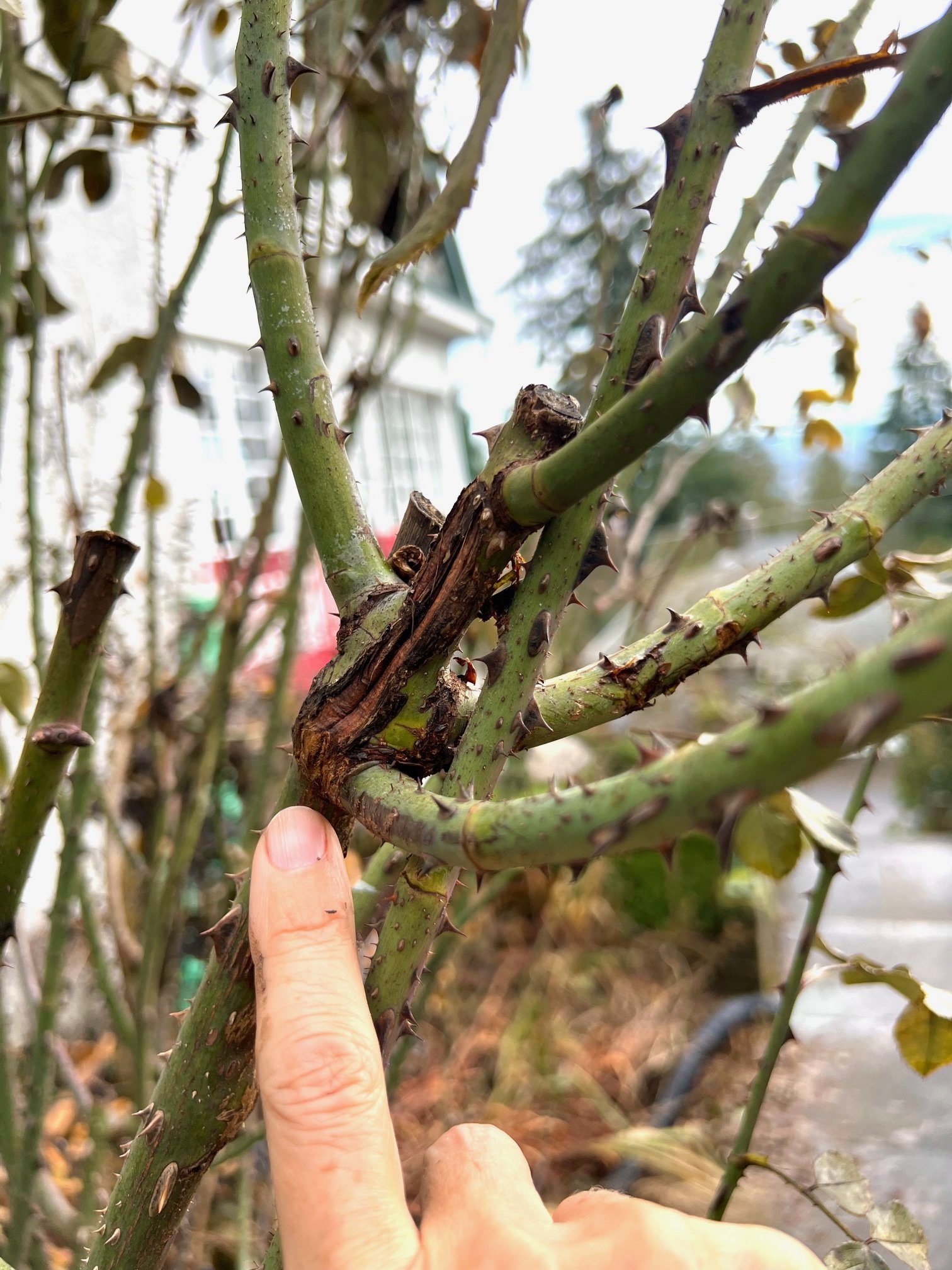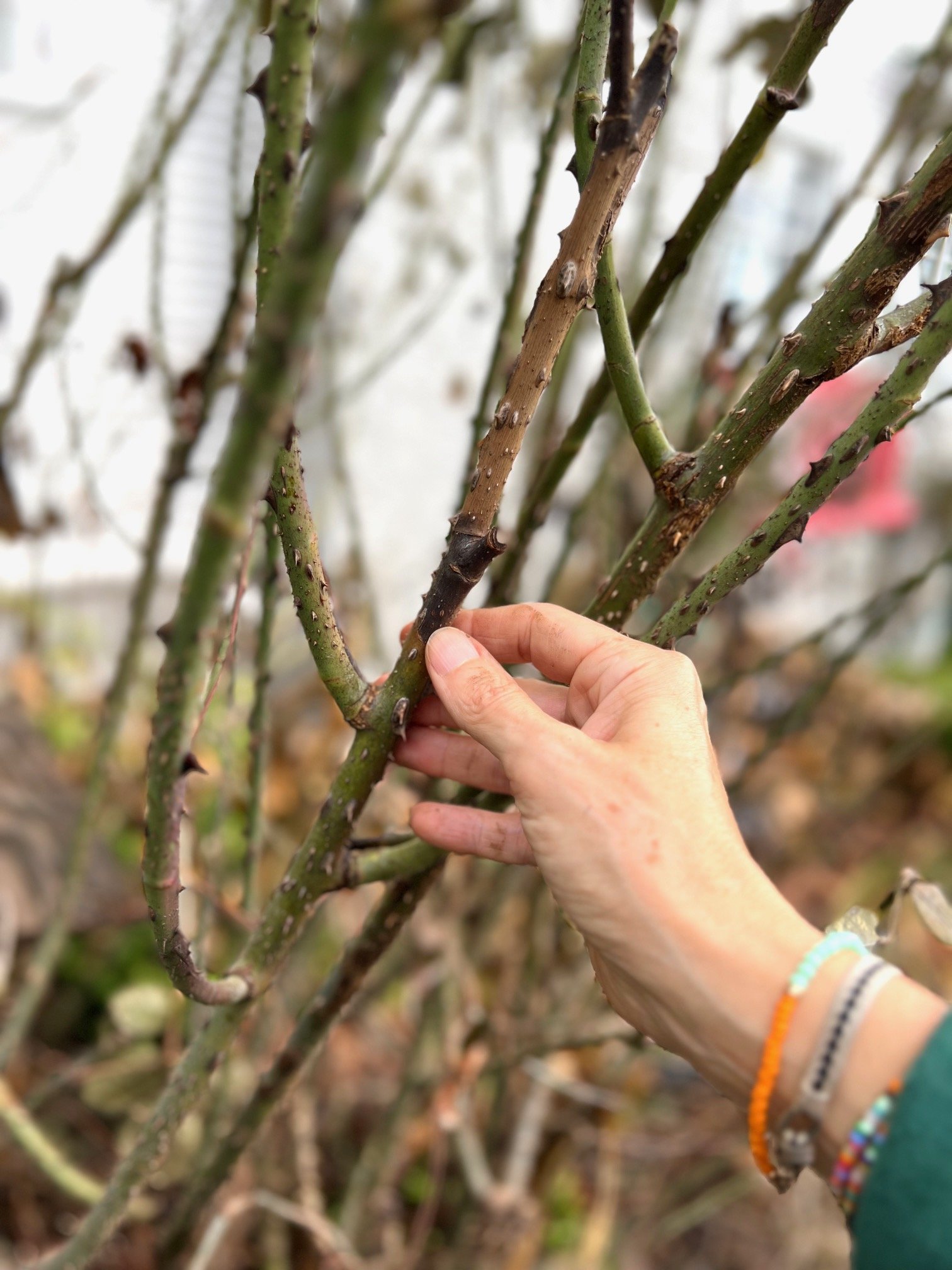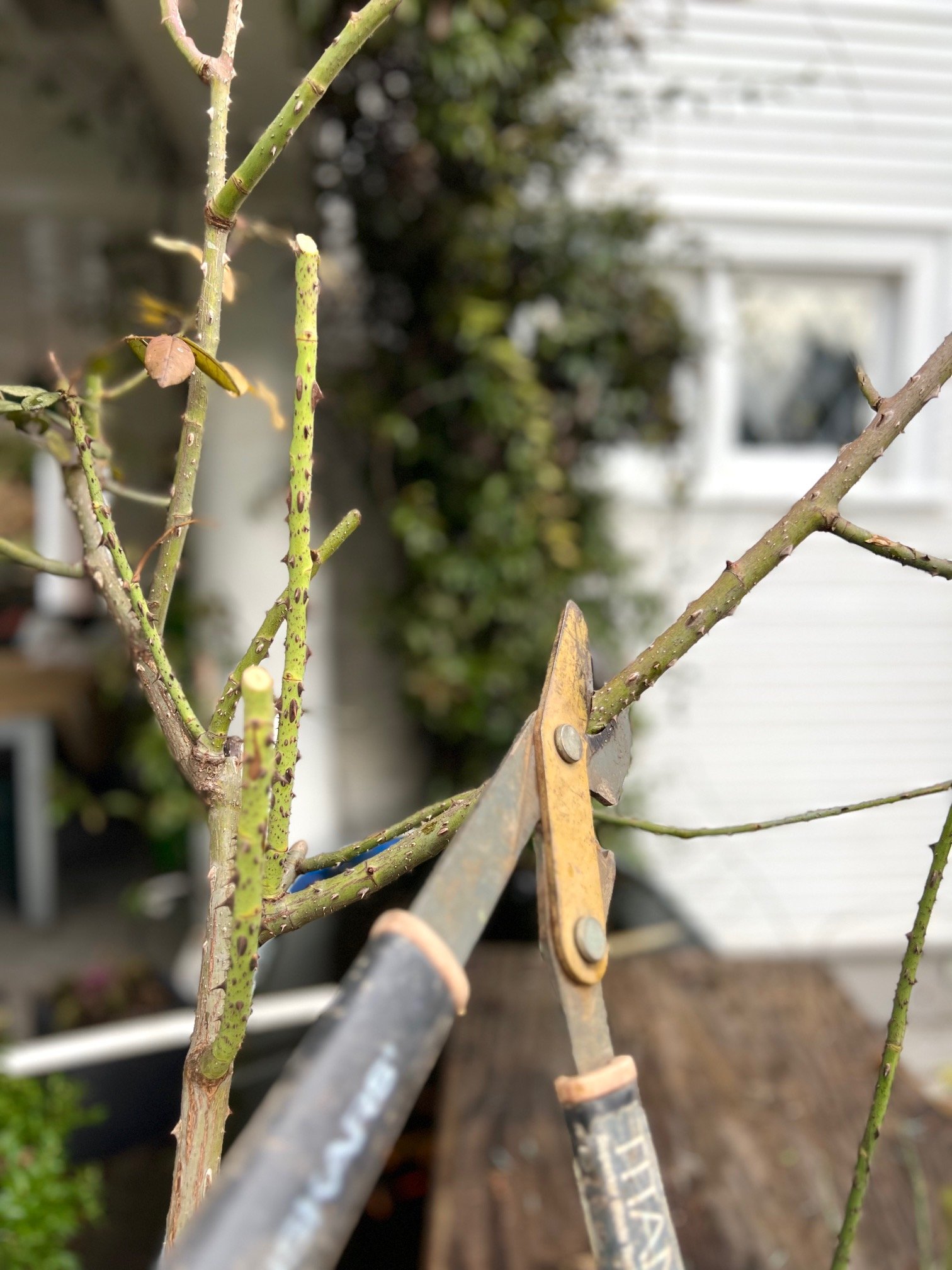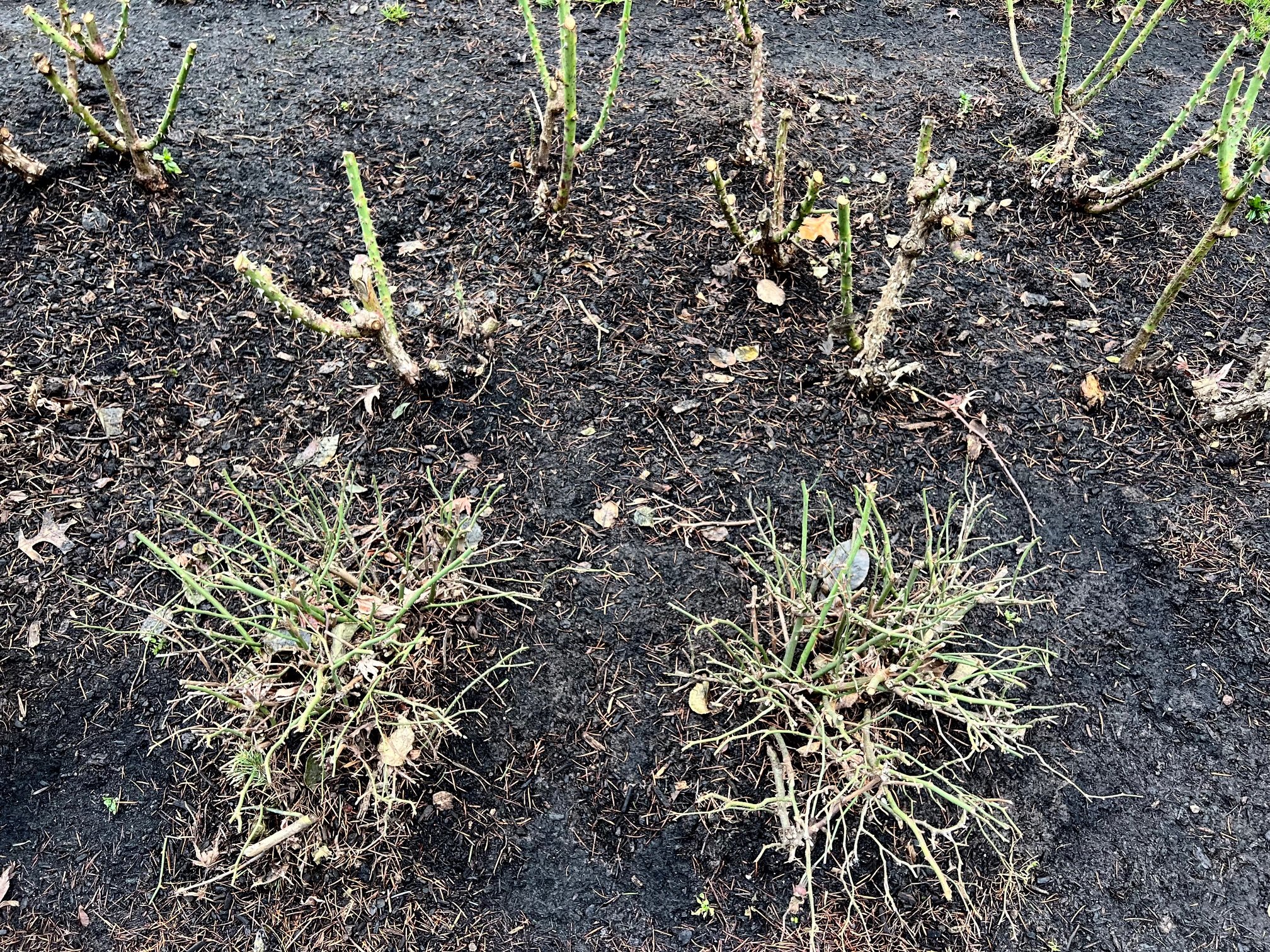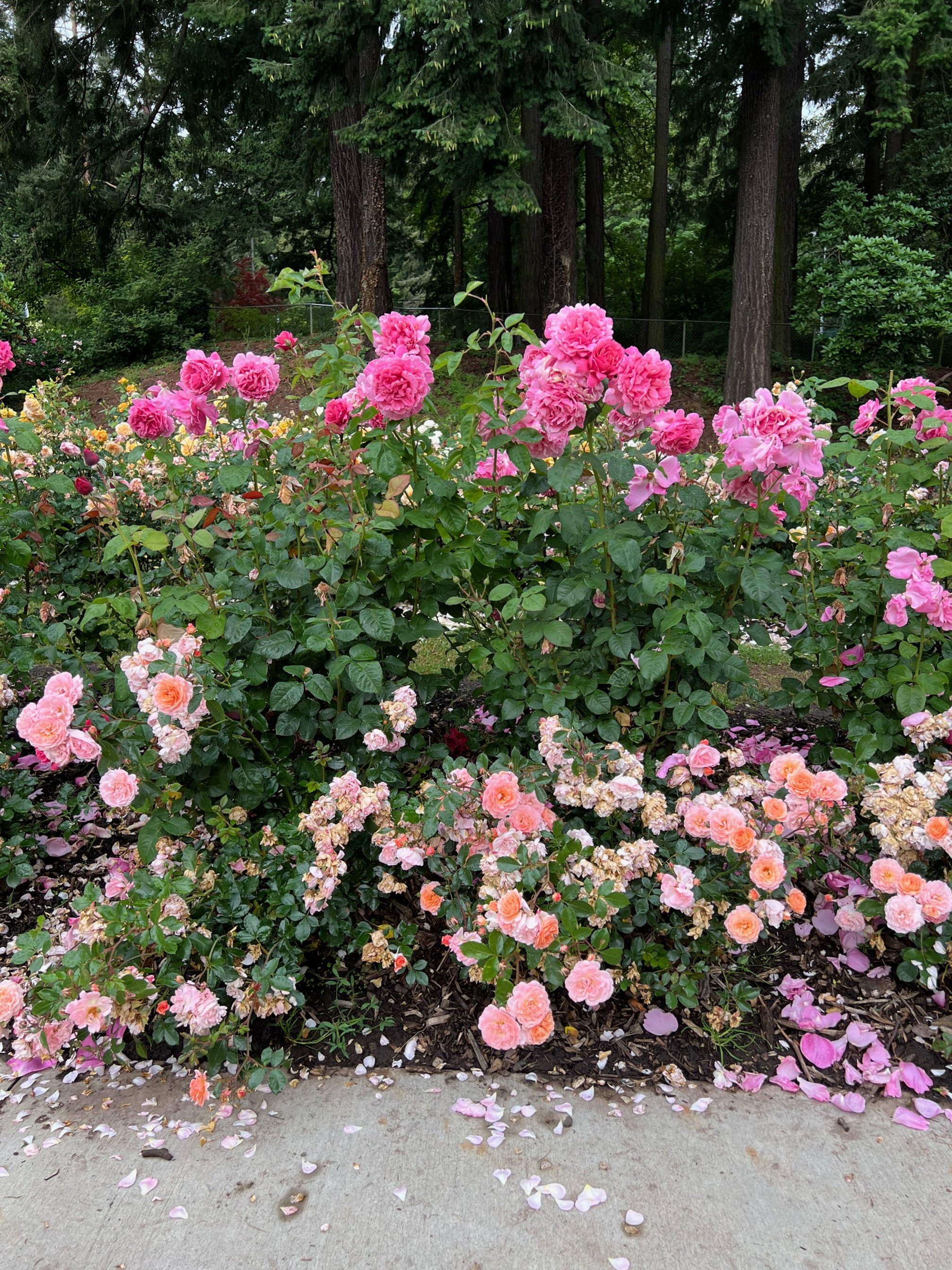Blooming Beauties
Yup, you're right, it's time! Grab your gloves and secateurs, wear some long sleeves, and get to it!
Our roses are calling for some attention! You may think, with an eye roll, that roses are too high maintenance, fussy pant plants, but we all need a haircut every so often, right? There's nothing to be intimidated by, and the rewards are too great not to grow a rose. Here are a few simple tips on pruning and feeding that should set you up for a gorgeous summer of blooms.
When to Prune
Zones 5, 6 & 7 - March/April
Zone 8- February
Zone 9 - Jan/Feb
Zone
10 - January
My garden last week
Honestly, when I see a thicket of spiky, thorny stems, I swear out loud, then I take a deep breath and jump in.
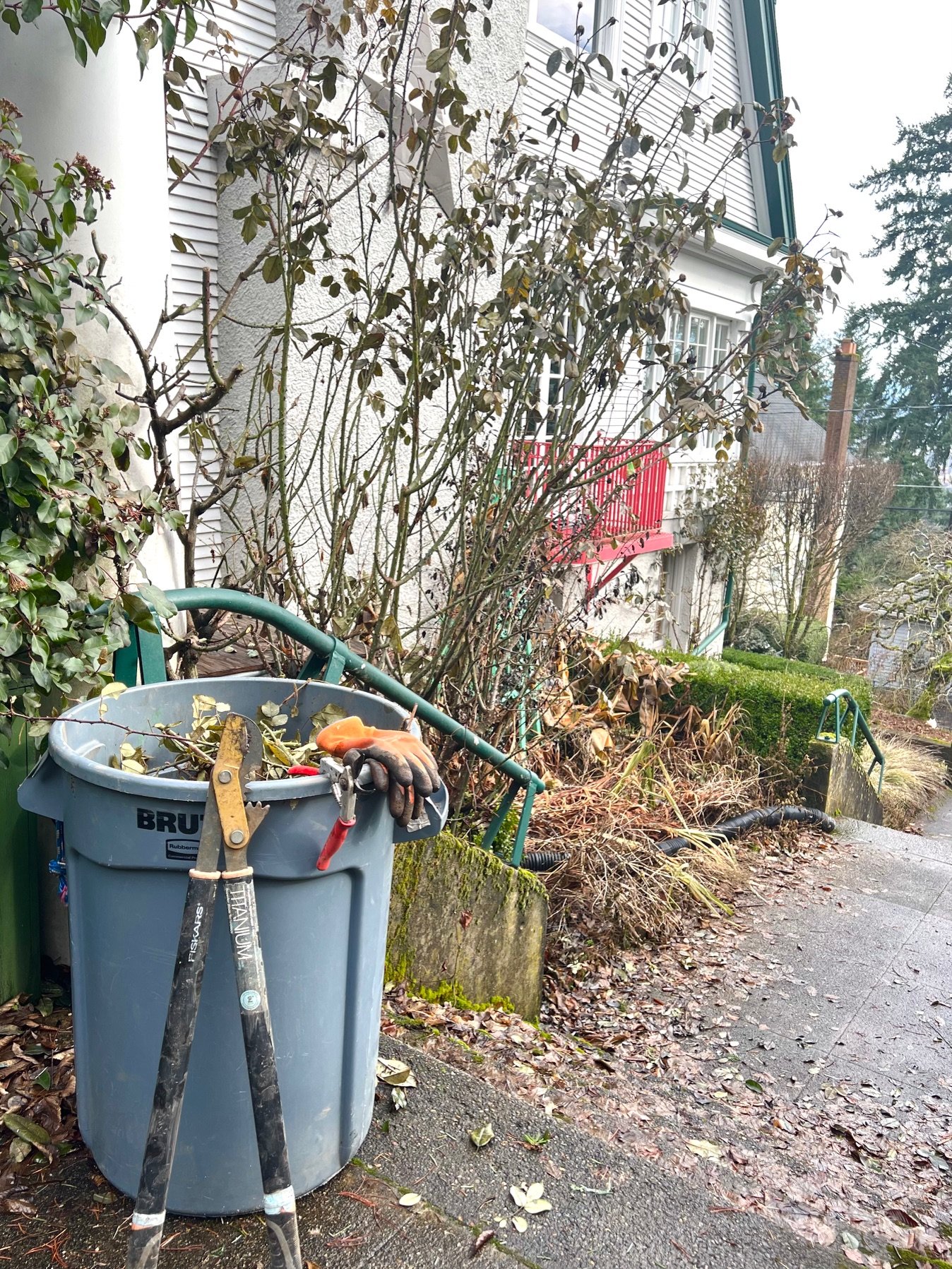
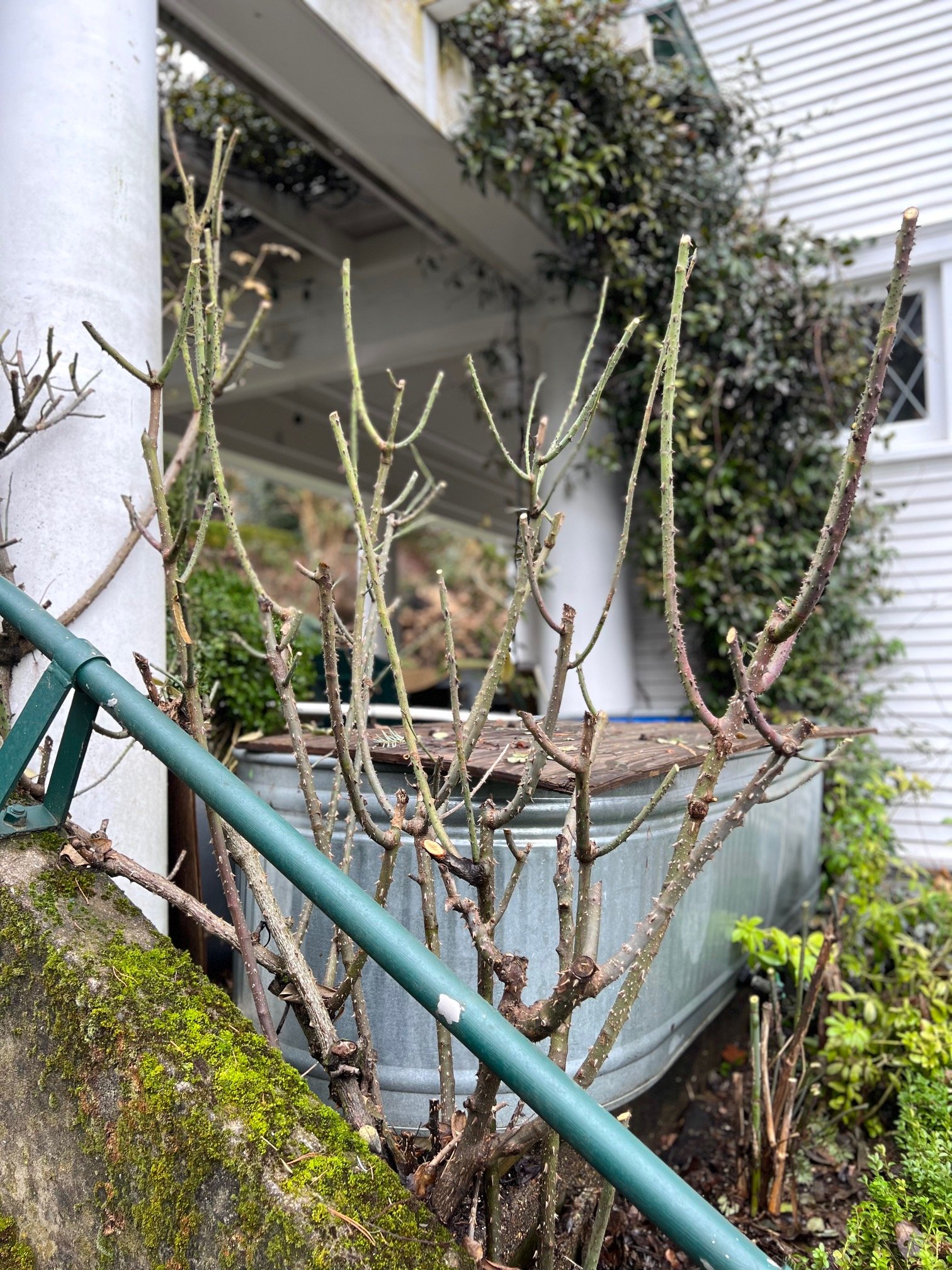
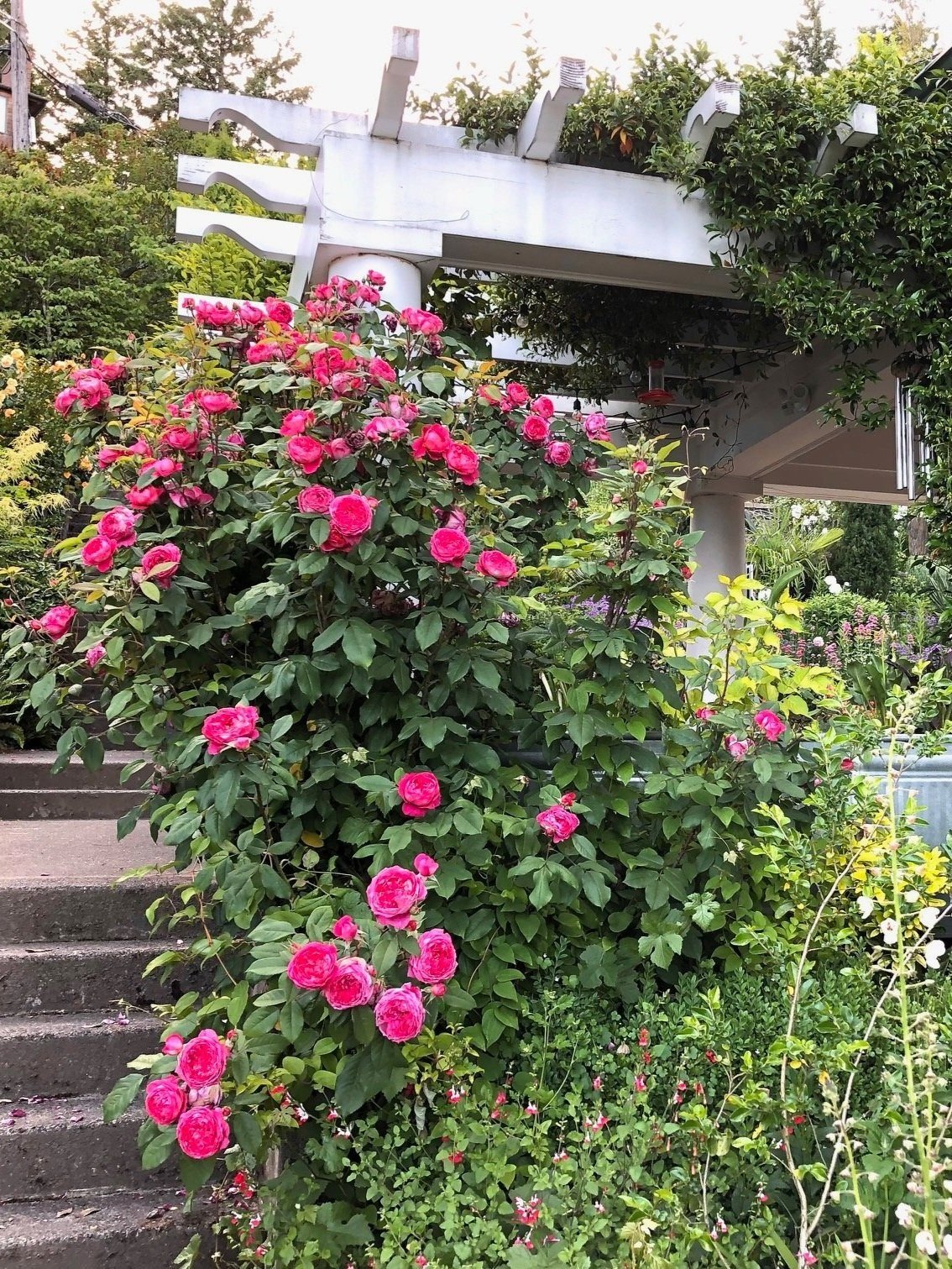
Once you get going, the work moves fast. And the reward is huge!
TOOLS
Secateurs, Loppers, and Gloves
Start with cutting out all the damaged, dead, and diseased wood.
Remove any weak or spindly growth.
Open up the plant structure. The goal is to have upward-reaching branches with an open vase-like shape.
Open Vase Shape
Make a cut just above an outward-facing bud. This will encourage an open shape.
After pruning, make sure to clean up all the dead leaves from last year as they can still carry pesky diseases.
Pruning Height
Gardner’s choice! Prune to the height you want your rose bush to be. If it is in the back of a border, leave it slightly higher; If it is in the front of a border, trim it lower.
I like my own roses to be about 4’ high in the summer, so I typically prune them to about 3’ in February. If you are not sure, experiment and make notes; they are very resilient plants.
Feed Your Roses.
Roses are big eaters and need nutrition throughout the growing season. When the first leaves unfurl, I like to add compost and a light sprinkle of alfalfa meal. Then, I follow with a monthly application of fertilizer. There are some great organic fertilizers specifically for roses, or, like me, you can make your own using the ingredients from your pantry!
Homemade Organic Rose Fertilizer
2 tablespoons Bio-Fish fertilizer
1 tablespoon Epsom salts
2 tablespoons apple cider vinegar
2 tablespoons molasses
Pour into a 2-gallon watering can and fill with water.
Use as a foliar spray or pour around roots
One batch feeds about 4 roses
Get Dirty,…. and don’t forget to smell the roses!



